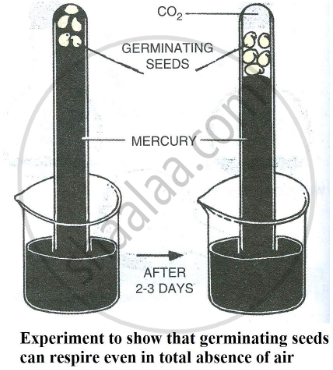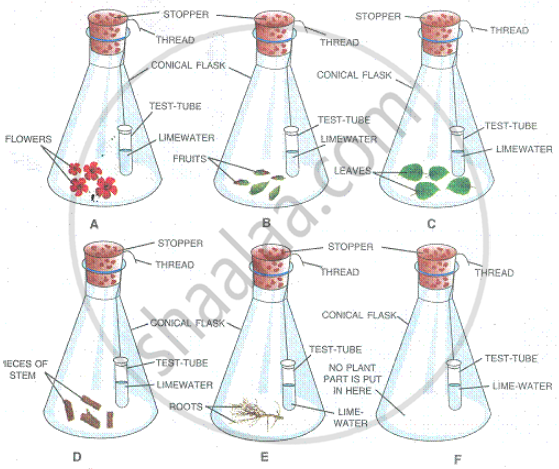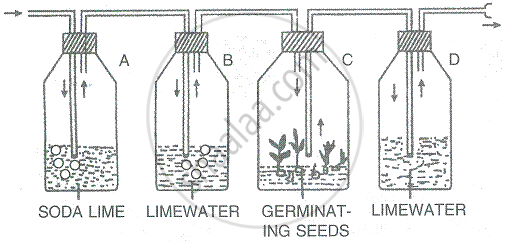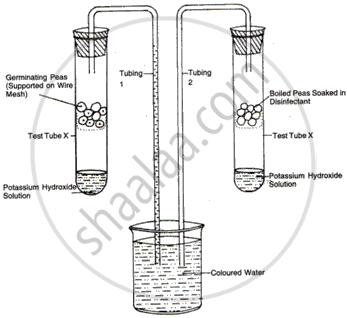Advertisements
Advertisements
Question
Describe one experiment each of you would perform to demonstrate the following phenomena: The germinating seeds can respire even in a total absence of air.
Solution
(1) Take few soaked and peeled off pea seeds and push them into the mouth of a test tube filled with mercury and inverted in a beaker of mercury. The seeds will float to the top and will be completely surrounded by mercury.
(2) After few days, the level of mercury falls and the presence of some gas in the test tube can be detected.
(3) Add some KOH to the test tube. The gas present in the test tube will be absorbed and the level of mercury will again rise showing that the gas was CO2. Hence, we can prove that germinating seeds respire even in the total absence of air.

APPEARS IN
RELATED QUESTIONS
Describe one experiment you would perform to demonstrate the following phenomena: The germinating seeds produce heat.
Given below is a set of six experimental set-ups (A-F), kept in this state for about 24 hours.

In how many flasks, the different plant parts have been kept under observation?
Given below is a set of six experimental set-ups (A-F), kept in this state for about 24 hours.

What is the purpose of the set-up F?
In order to study and prove a particular physiological process in plants, the following experiment was set up. Study the same and then answer the question that follows:

Name the physiological process being studied.
In order to study and prove a particular physiological process in plants, the following experiment was set up. Study the same and then answer the question that follows:

What is the function of soda lime in the bottle 'A' and why is limewater placed in bottle 'B'?
In order to study and prove a particular physiological process in plants, the following experiment was set up. Study the same and then answer the question that follow:

What change would you expect to observe in bottle 'D'?
Given alongside is an experimental set up to demonstrate a phenomenon in a plant:
(a) What is the aim of this experiment?
(b) Why was the bell jar covered with a black cloth?
(c) What is the function of caustic soda in this experiment?
(d) Give an overall chemical equation of the process mentioned in (a) above.
(e) Mention one precaution that should be taken to ensure more accurate results. What change, if any, would you observe in the lime water in Flask A and B? In each case give a reason for your answer.

The given fig. refers to an apparatus which is used to demonstrate a physiological process:

(a) What is the purpose of keeping potassium hydroxide solution in test tubes X and Y?
(b) What is the purpose of keeping boiled peas soaked in disinfectant in test tube Y?
(c) Why has coloured water risen in tube 1?
(d) Name the biological process which causes the above rise.
(e) Define the biological process shown in the experiment.
Name the following:
The chemicals generally used to absorb carbon dioxide in respiratory experiments.
Name the following:
The solution that turns milky when carbon dioxide is passed through that solution.
